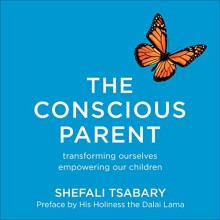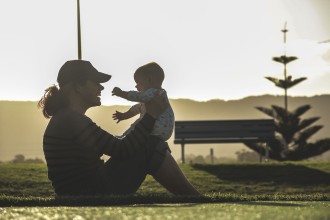Sustainable 'Sleep Training' for long term benefits
28 Jun, 2019It may seem contradictory, but the best chance your child has of eventually self-soothing – when they are cognitively ready to – is responding to them when they cry at night. Hear me out.
Self-soothing is based on the premise that a child is able to control their emotions – that is accept their feelings and learn how to manage them so they are not overcome by them, to be able to reach out to other people and communicate what they are feeling, ask for help if needed, and respond appropriately to situations without resorting to violence etc.
Once a child is able to control their emotions they can self-soothe and reassure themselves if they wake at night afraid or anxious, and maybe put themselves back to sleep. But how do we get them from being a helpless new-born to an emotion regulating little human?
The best way to ensure that a child develops this ability is by validating their feelings, allowing them to express their feelings and offering them comfort and reassurance when they express feelings of vulnerability, fear and anxiety. This may mean waking up in the middle of the night and cuddling your baby when they cry, or feeding them if they want a feed, or changing their nappy if its wet. It means responding to their feelings, emotional and physical needs at any time of day and night. And the fruits of your labour will be reaped in the years to come in having an emotionally intelligent child who is comfortable in expressing and managing their emotions, has successful relationships with others and if the it still matters – can self-soothe as they get older and put themselves back to sleep. Research by Luby, barch, Belden, Gaffy etc in Proceedings of the National Academy of Sciences shows that mothers who nurture their children and respond to then during infancy will have children who are better able to regulate their emotions later in childhood. Another study by Mirabile, Scaramella, Sohr-Preston and Robison found that where mothers use strategies to regulate their toddlers emotions like distracting them and moving their attention elsewhere can more effectively regulate their emotions rather than mothers who respond with anger or punitive behaviour. These children go on to have problems controlling their emotions later in childhood.
Another study by Spinrad, Stifer, Donelan-Mcall, and Turner in 2004 in the journal of Social Development looked at 55 low income mothers and their 2 year old children. It observed the children and mothers in a series of experiments, measuring both child reactivity and the strategies used by the mother to regulate their emotions such as restraint, verbal direction and physical soothing. What it found was that “mothers with less reactive children who used more soothing had children who were more likely to use interactive, distraction-based regulatory behaviors during a frustration situation”.
The same results are reflected in infants looking at Mother sensitivity to the baby. Research by Kogan and Carter on ‘Mother infant reengagement following the still-face’ examined 29 4 month old infants and their mothers in an experiment where the mother would play with the baby for 5 minutes, then sit with a still face for 3 minutes, and then re-engage with them for 2 minutes. What it found was that mothers who played with their babies and were more sensitive initially, had babies who were more well-regulated when they re-engaged with them, than mothers who were less sensitive when playing with their baby. These babies had resistant and avoidant behaviours. What this demonstrates is that even in a 10 minute period, our sensitivity to our children can be a predictor of their future abilities to regulate their emotions.
What this research shows that if we want to allow our children to be able to regulate their own emotions in the future, to have good relationships and be socialised in a society that is interdependent, the key is responding and validating their feelings when they are infants. We can do this by responding to their needs day and night, and giving them love and comfort when they communicate to us by crying. This means acting as their external regulator for however long it takes until they no longer need us and are cognitively able to regulate their own emotions.
Research
https://onlinelibrary.wiley.com/doi/abs/10.1111/j.1467-9507.2004.00256.x https://www.ncbi.nlm.nih.gov/pmc/articles/PMC2882295/
https://www.sciencedirect.com/science/article/pii/S016363839690034X
Cover Image by Skeeze from Pixabay
Get The Best Of Sleepy Roo Delivered To Your Inbox
Subscribe to my newsletter and get the latest info on baby sleep! You can unsubscribe at any time.



